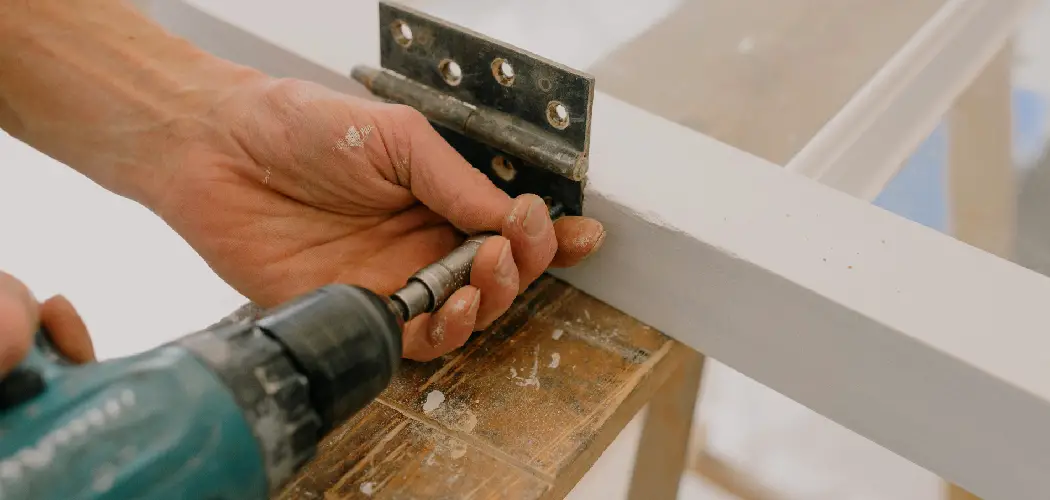If you’re working on a renovation project that involves hanging doors and setting up door hinges, then drilling the holes for those hinges is an important step to get right. However, if you’ve never done it before or have limited experience with such tasks, it can be intimidating and difficult to know exactly how big of a hole needs to be drilled and where it should be placed.
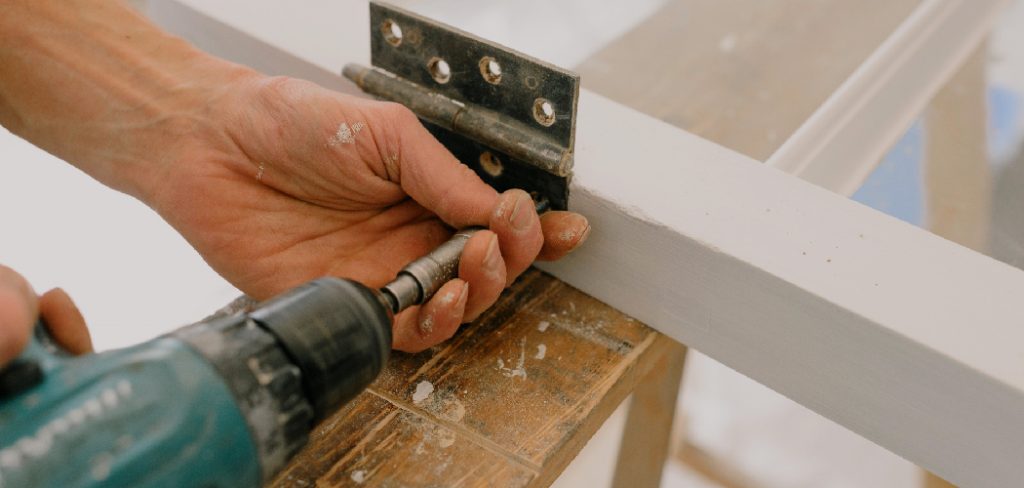
Not to worry though – in this blog post we’ll provide some tips on how to drill holes for door hinges properly! Read on to find out more about this essential DIY process and equip yourself with the knowledge of how best to execute it.
Step by Step Guidelines on How to Drill Holes for Door Hinges
Step 1: Check the Door Hinge
Before starting, take a close look at the door hinge and make sure that you have the correct measurements for where the holes need to go. Note down all of the important data regarding width, length, and depth so that you can refer back to it as needed throughout the drilling process. Checking the door hinge beforehand will also prevent any issues that could arise from drilling the wrong size or depth of the hole.
Step 2: Mark the Hole Position
Using a pencil and a ruler, mark where you will need to drill the holes. Make sure that they are lined up properly with the door hinge so that they can be installed correctly.
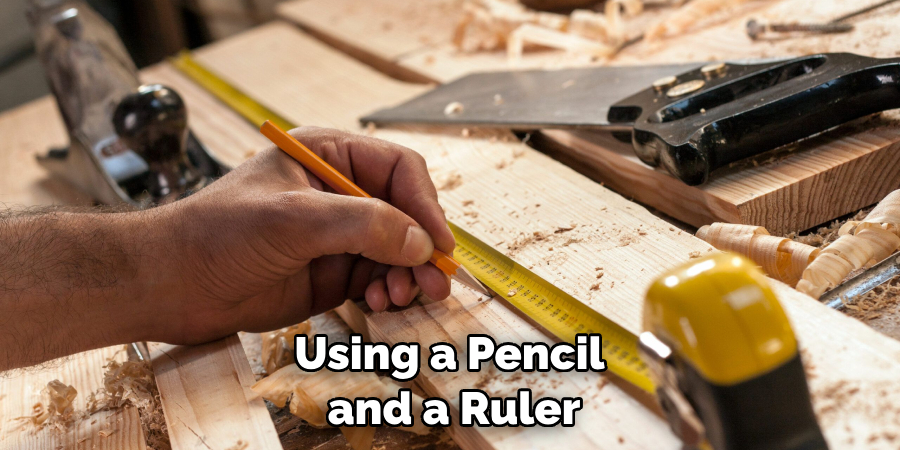
Double-check your measurements before drilling, as any mistakes could cause serious problems for the integrity of the door when it is hung. Make sure to use a level when marking the holes so that you can get them lined up correctly and be sure to measure twice before drilling.
Step 3: Use the Right Drill Bit
Select a drill bit that is slightly smaller than the width of the screws that will be used to secure the door hinge in place. Using too large of a drill bit can result in a hole that’s too big and could cause the hinge not to fit correctly. Using the right drill bit will make the hole just right for the screws. Otherwise, you will have to use filler or putty to fill in the gap.
Step 4: Test the Depth
Before drilling, test the depth of your hole with a ruler. You want the hole to be deep enough for the screws to fit in securely, but not so deep that they end up poking through into the other side of the door. Once you’re sure about the depth, you can start drilling. Testing the depth ahead of time will make sure that you don’t end up drilling too deep and damaging the door.
Step 5: Drill the Hole
Using the drill bit that you have selected, start drilling the hole into the door. Keep a steady hand to ensure that you drill straight and be careful not to move it off-center. Once you have drilled the hole to the desired depth, clean up any debris or sawdust and double-check that it is lined up correctly with the door hinge before moving on to the next step.
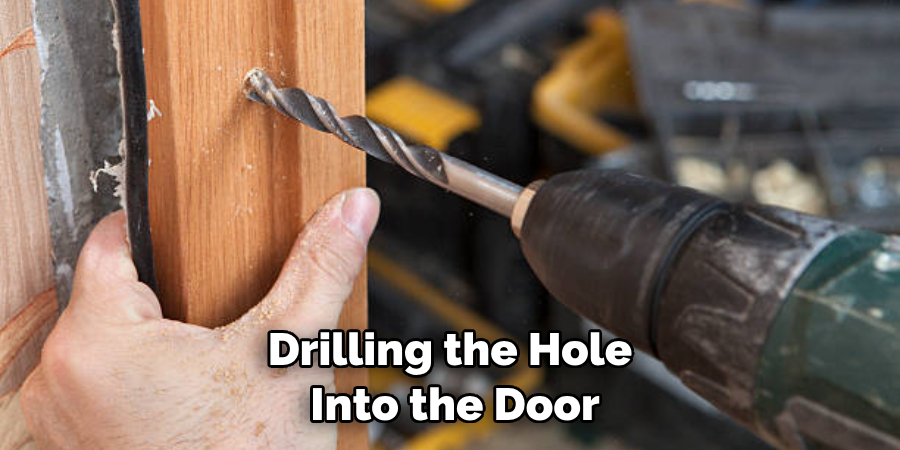
Step 6: Install the Door Hinge
Finally, install the door hinge into its place by securing it with screws. Be sure to use the screws that are included with the door hinge, as they will be of the right size and length for the job. This time, make sure to check that the screw heads are flush with the door so that they don’t stick out and cause problems when you are closing or opening it.
Once you have finished drilling holes for your door hinges, give yourself a pat on the back! You’ve successfully completed an important part of installing doors in your home. With the tips mentioned in this blog post, you will be able to confidently and accurately drill holes for door hinges with ease.
Additional Tips and Tricks to Drill Holes for Door Hinges
1. Consider using a dowel jig for drilling the hole. Dowel jigs are designed to help you keep the drill in the exact spot that you need it, making it easier to create an even and precise hole.
2. If you find that your hinge sits too low on the door, use a long wood screw that’s slightly larger in diameter than the hinge screw. This will help you sink it deeper into the door and raise the hinge slightly to ensure proper alignment.
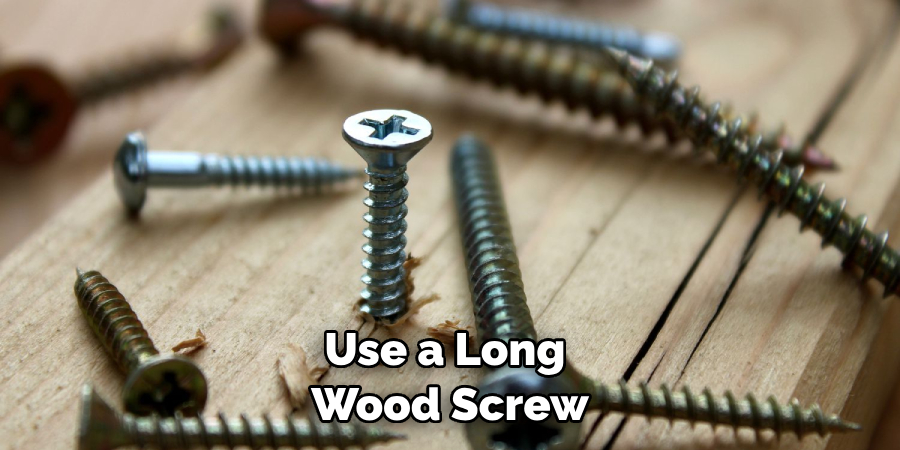
3. For added durability, consider predrilling pilot holes before inserting your screws or nails into the door frame. Pilot holes are small, shallow holes that allow for easier driving of the screws or nails.
4. If you are dealing with an old door, always make sure to use a countersink bit when drilling holes. This will ensure that the head of the screw is slightly below the surface of the wood, allowing for a flush fit and making it less vulnerable against jostling or wear and tear over time.
5. When drilling, make sure to use a drill bit that is slightly smaller than the screw or nail you’ll be using. This will help ensure that the screw fits into the hole snugly and won’t require too much force when driving it in.
6. Before drilling, try to map out where the hinges will go and mark them with a pencil. This will give you some direction and help ensure that all of your holes are in the correct locations for optimal function.
7. Make sure to use a drill bit specifically designed for woodworking when drilling the holes for your door hinges. Using the wrong type of drill bit can result in splintering and extra wear and tear on both the drill bit and your door frame.
8. Once you’re finished drilling, use a countersink to clean up any rough edges around the holes. This will make it easier for screws or nails to fit into the holes and create a more secure fit.
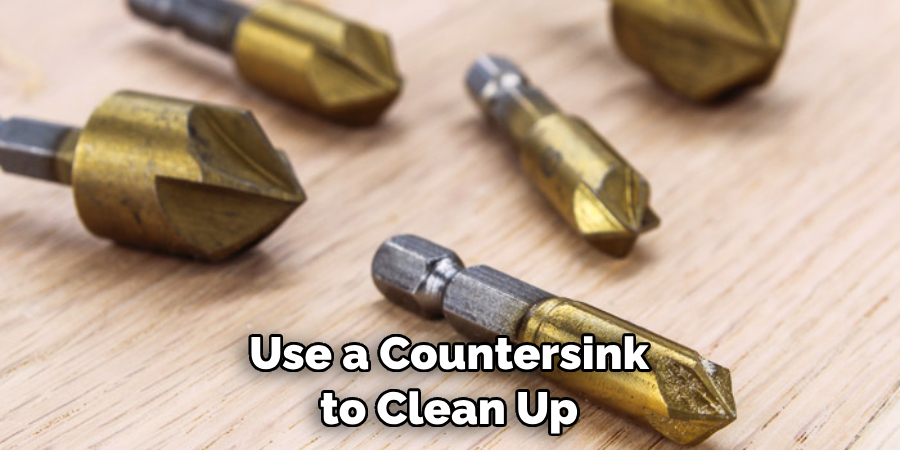
By following these tips and tricks, you can ensure that your door hinges are installed properly and securely for years to come. With the right tools and techniques, anyone can drill perfect holes for their door hinges!
Things You Should Consider to Drill Holes for Door Hinges
1. Make sure that the drill bits you use are of proper size and material for the job at hand. Harder metals require high-speed steel (HSS) drill bits, while softer materials can work with less expensive carbon steel bits.
2. Select the correct type of drill bit for your door hinges. For example, if you are using a 3-inch screw hinge, you’ll need a drill bit that is slightly larger than the diameter of the screw for proper clearance.
3. Mark the positions of the hinges on your door with a pencil or marker to ensure accuracy when drilling holes.
4. Put on safety glasses and gloves before beginning to drill.
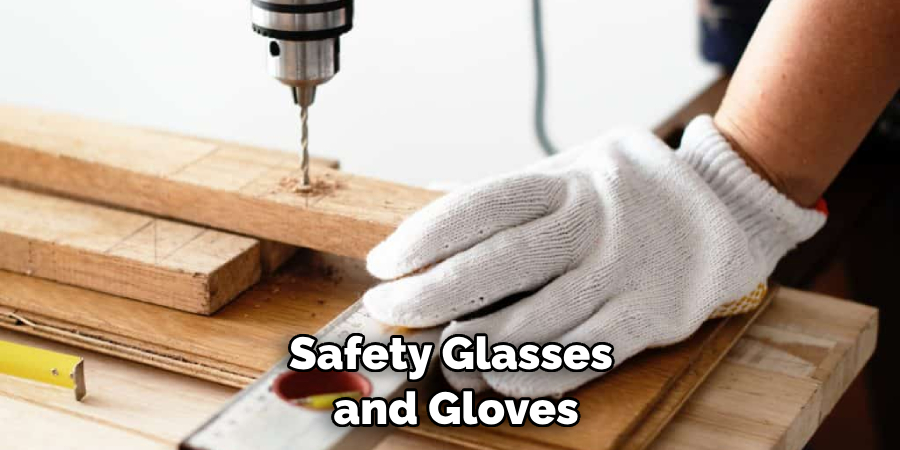
5. Secure the door in a workbench or clamp it to a sturdy surface and ensure that you have sufficient room to move around.
6. Start drilling at a slow speed, gradually increasing the speed as the bit begins cutting into the material.
7. Use light pressure when using your drill and keep it perpendicular to the door surface at all times.
8. Once the hole is drilled, use a countersink bit to slightly enlarge the top of the drill hole so that your screws can sit flush with the door surface.
9. When reversing a drilling direction, wait until the bit has completely stopped before changing direction. This will allow for better control and accuracy when drilling holes in the door.
Following these simple considerations when drilling holes for door hinges will help you complete the project safely and accurately. Make sure to always wear appropriate safety gear and use the right tools for the job at hand. Once done, you’ll be able to secure the hinges onto your door without any issues. Good luck!
Precautions Need to Follow for Drilling Holes for Door Hinges
1. Safety should be the number one priority when drilling holes for door hinges. Make sure to wear safety glasses and gloves, to protect your eyes and hands from flying debris or sharp metal edges.
2. Before you begin drilling, measure twice in order to ensure that the hole is positioned properly for the hinge. Use a pencil to mark the spot where you plan on drilling so that it is easier to spot.
3. Make sure you have the right drill bit size for the job, as using too small of a drill bit can cause weak spots in the material and make it more prone to breaking with use.
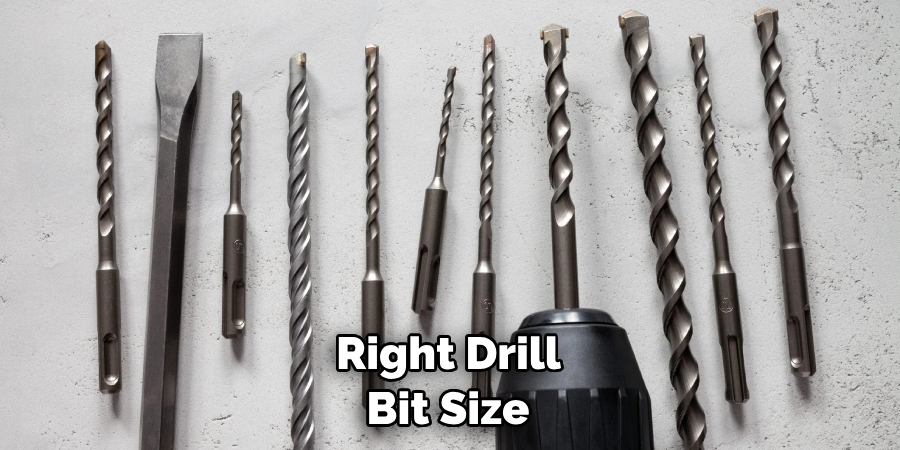
4. When possible, clamp down your material so it doesn’t move. This will help ensure that the hole is drilled straight and at the right depth.
5. Start drilling slowly, increasing speed as you become more comfortable with it. Once you feel resistance, slow down again to avoid damaging your drill bit or making a mistake in the shape of the hole.
6. Use a lubricant, such as a machine oil or paraffin wax, on the drill bit to keep it from overheating and to help remove any debris that comes out of the hole. Make sure you clean off the area after the drilling is finished so that the door will fit properly.
7. Finally, use a countersink drill bit to create a beveled edge on the hole so that the head of the hinge will fit flush with the material. This will also help make your door more secure and look better overall.
By following these precautions, you can safely and correctly drill holes for door hinges. Doing so will make sure that your door fits properly and is secure when in use. With the right tools and techniques, anyone can install a door hinge with ease!
Frequently Asked Questions
What Type of Drill Bit Should I Use for Door Hinges?
For most standard metal door hinges, you should use a 3/32-inch twist drill bit. If you are drilling into wood or plastic, then a 5/64-inch twist drill bit is recommended.
What Is the Best Way to Drill a Door Hinge?
For best results, use an electric drill with variable speed. Start slowly at low RPMs and gradually increase the speed as you make your way through the material. Also, be sure to use lubrication if drilling into metal hinges – this will help reduce friction and ensure a clean, precise hole. Additionally, don’t forget to wear protective eyewear and keep your hands away from the drill bit at all times!
What Should I Do If I Make a Mistake While Drilling?
If you make a mistake while drilling into your door hinge, it is best to start over with a fresh piece of material. If the mistake is minor, you can use sandpaper or a file to smooth out any rough edges and make sure the hinge will fit properly.
Conclusion
Knowing how to drill holes for door hinges is an important part of any home improvement project. Choosing the right size drill bit and drilling with a steady hand can help ensure success when installing your new door hinge.
Be sure to wear protective eyewear, keep your hands away from the drill bit, and use lubrication if necessary to get the best results. If mistakes are made, it is best to start over with a fresh piece of material. With these tips in mind, you will be able to tackle any door hinge installation project with confidence! Good luck!

